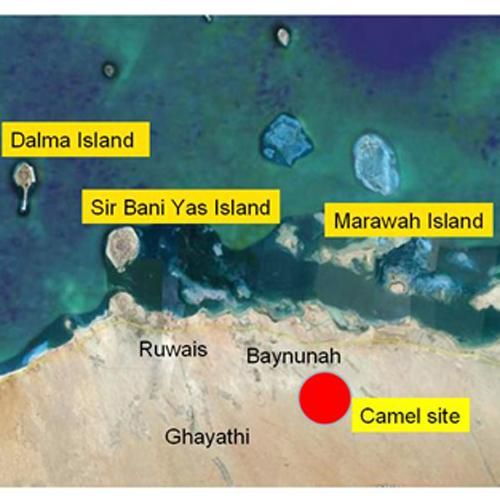Abu Dhabi -- A team of archaeologists from the Abu Dhabi Authority for Culture and Heritage (ADACH) recently discovered the skeletons of at least 40 ancient wild camels in Al Gharbia, the western region of Abu Dhabi, announced Mohammed Khalaf Al Mazrouei, Director-General of ADACH.
Radiocarbon dating of camel bones from the site demonstrates that they all date to more than six thousand years ago. The discovery has a scientific significance worldwide.
An announcement concerning this discovery was made late July at the Seminar for Arabian Studies, an international gathering of archaeologists and heritage experts which is held annually at the British Museum in London.
The site is especially interesting because of the large number of camel remains. So far work has concentrated on the collection of material from the surface of the site, and on the measurement of bones.
Preliminary analysis of the size of the camel bones suggests that two types of camels were present. Some of the camels were young adult animals of comparable size to the Bronze Age wild camel bones discovered previously at Umm an-Nar, but some older individuals were extremely large.
Further work at the site is planned by the Historic Environment Department team at ADACH for the forthcoming winter season. This will concentrate on understanding the environmental context of the site, as well as on the further detailed analysis of the ancient camel bones.
"The camel skeletons discovered in the Baynunah region of Al Gharbia represent the largest sample of ancient wild camel bones so far discovered in Arabia," said Dr Mark Beech, Cultural Landscapes Manager in the Historic Environment Department at ADACH.
Dr Beech presented the details of the new discovery on behalf of the research team at the conference. The team includes Dr Marjan Mashkour (bone specialist) and Dr Antoine Zazzo (radiocarbon dating specialist) from the National Museum of Natural History in Paris, France, and Dr Matthias Huels (radiocarbon dating specialist) from Christian Albrechts University at Kiel in Germany.
Traditionally it was believed that the camel was first domesticated during the Bronze Age, around four thousand years ago, because of the abundance of camel bones found at sites such as Umm an-Nar. Recent work from sites such as Tell Abraq and Muweilah in Sharjah emirate has demonstrated however that the camel was not domesticated until the Iron Age, some three thousand years ago.
"The new discovery of a large quantity of wild camel skeletons in Abu Dhabi's western region provides a fantastic opportunity to examine the history of the camel in Arabia," said Dr Beech.
The camel remains are located in a depression between sand dunes to the south of the Baynunah forest area. This was an area with ancient lakes between around 9,000 and 6,000 years ago, being a place where wild camels came to drink.
The early peoples of Abu Dhabi would have hunted these animals, and we discover traces of flint arrowheads manufactured by these people in the area surrounding the site.
6000-year-old camel bones found in Abu Dhabi desert
6000-year-old camel bones found in Abu Dhabi desert













